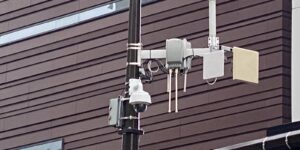
Respond to retaliatory violent disputes
A violent retaliatory dispute is a conflict between multiple people that carries on over time. A violent retaliatory dispute is characterized by confrontation and intimidation…

A violent retaliatory dispute is a conflict between multiple people that carries on over time. A violent retaliatory dispute is characterized by confrontation and intimidation…

Law enforcement agencies can take several steps to improve homicide investigations and homicide clearance rates. By implementing these best practices, agencies increase the likelihood that…

Focused Deterrence is a multi-faceted evidence-based approach that first identifies groups or individuals who are driving gun violence and then provides collaborative intervention strategies. Law…

The Top Offender List training provides insight and guidance in developing a “top offender list” documenting the roughly 6% of individuals responsible for over 60%…

Research finds that the clearance rate for homicides is higher than the rate for non-fatal shootings. This discrepancy is the result of sustained investigation of…

Problem-oriented policing uses the SARA Model: Scanning, Analysis, Response, Assessment. The model is supposed to support an active and ongoing process that involves identifying problems…

Real-Time Crime Centers (RTCCs) leverage innovative technologies to help law enforcement agencies respond strategically to crime. RTCCs can help officers respond quickly to crimes in…

The Nonfatal Shooting/Gun Violence Reduction Assessment helps to assist local gun violence prevention efforts and to organize an efficient, productive agency response to identify and…

Law enforcement agencies can create neighborhood engagement units to reach marginalized populations by collaborating with community residents, working with these residents to identify problems and…

State laws typically require community members to report if their personal firearm is lost or stolen; however, many individuals do not get around to doing…

Law enforcement agencies can use a wide range of approaches to identify chronic offenders and implement tailored interventions to prevent re-offending. Predicting repeat offending is…

Homicide review commissions are multi-agency efforts that aim to reduce homicides and non-fatal shootings. Law enforcement, community service providers, and criminal justice professionals meet on…

The goal of the Homicide Investigations and Prosecution Assessment is to reduce violent crime, promote high-quality investigations, and result in successful prosecutions for homicide cases…

Homicide and non-fatal shooting databases are tools to help commanders stay updated about key identifiers in recent violent crimes. The databases are stored online and…

Gunshot detection technology is an acoustic surveillance system that law enforcement agencies install in high-crime areas so that it notifies police about the precise location…

Gun tracing involves tracking the movement of a gun used in a crime from its first sale. Gun tracing helps law enforcement identify suspects and…

Gun buy-back programs enable law enforcement agencies to offer cash, gift certificates, or other incentives in exchange for guns. The goal of these programs is…

Hot spots policing and directed patrols are similar strategies which focus on increasing law enforcement resources in areas known to experience high rates of crime.…

The Detective Function Assessment is a thorough examination of overall investigative functions and processes, including skillsets of the detectives and investigators, training needs, operations, and…

Consent to search and seize programs focus specifically on the parents of youth living in high-crime areas. Police go door-to-door and ask parents for their…

Comprehensive gun violence reduction strategies combine enforcement, prevention, policy, and reentry efforts to target gun violence in communities. Approaches are tailored to the specific community…

Comprehensive anti-gang initiatives combine enforcement, prevention, and reentry efforts to target gang-related gun violence in high-crime neighborhoods. Sites that implement this approach to tailor the…

Automatic camera initiation, or auto-trigger technology, automatically turns on body-worn cameras in response to specific stimuli. Law enforcement agencies can choose to have body-worn cameras…